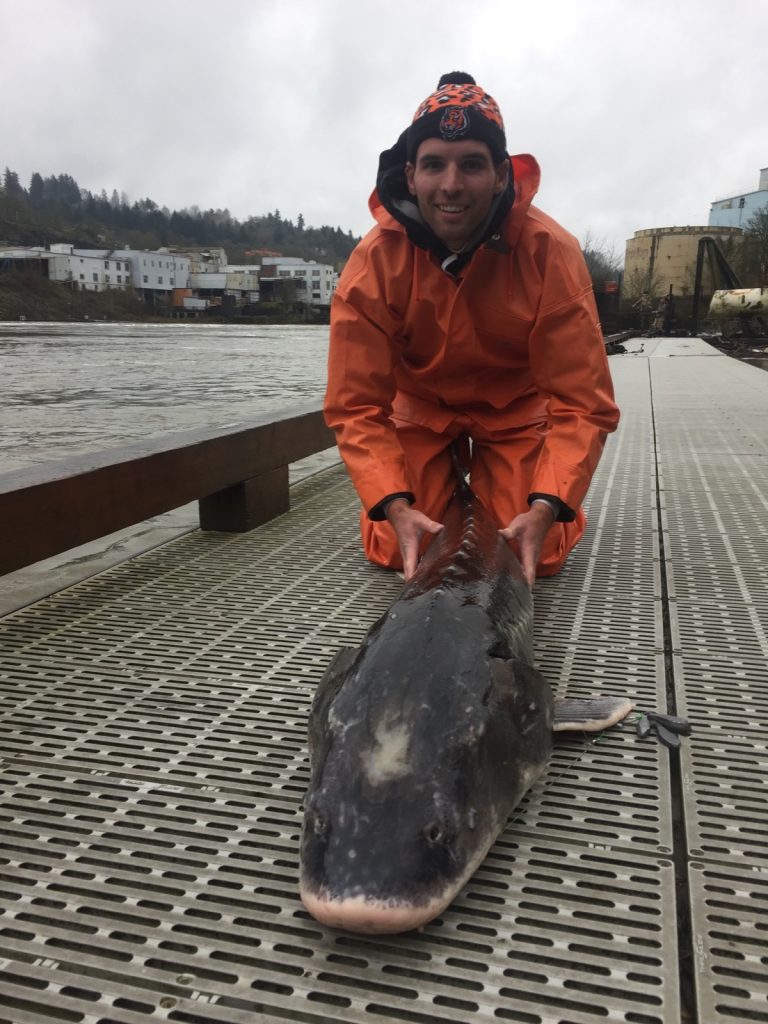How to Measure Fish…
You Will Need:
1) Retractable 5′ Cloth Tape Measure
2) Berkley 50-lb Digital Scale
3) An appropriately-sized net or a bag to hold the fish while you weigh it
How to Measure Fish
For most anglers, weighing and measuring fish is a major part of the sport. Validating length and weight for the trophy fish pictures you post will determine whether or not people believe you. While there are few things worse than a dishonest fishermen, knowing how to accurately measure fish without harming them is a necessary and all-too-often ignored skill among anglers.
A lot of ignorant anglers will look at the photo below and think nothing of it, but there is a fine line between mishandling fish and measuring fish. The sturgeon below was removed from the water to take old, wrapped line off of its tail and only because I didn’t have a knife to cut the 100-pound braid free from its tail. I was fishing from a dock about two feet above the water’s surface and didn’t’ have a knife. Sea lions were all over, and I figured it was the best chance to save the fish. That said, it was technically illegal, and in an ideal world, I never would have done it.

Big sturgeon are especially difficult to handle, and in most states, removing them from the water is not allowed. My largest fish at the time of writing was a sturgeon exactly one inch longer than I am tall. I removed it from the water to get old line wrapped around it. It made me feel good and bad at the same time. Fortunately, most scenarios aren’t so nuanced. Here’s how to measure fish properly.
General Rules for Measuring Fish
Every species will warrant slightly different tactics, but a few general rules apply:
1. Don’t measure the fish if you really don’t have to. There’s nothing wrong with wanting to measure trophies, but why measure a fish if it isn’t one of your best?
2. Use a soft cloth tape. Don’t use metal tapes because these can slice fish open.
3. For most species, a length measurement should be taken from the tip of the nose to the tip of the tail. Certain species (like the sturgeon above) are measured from the tip of the nose to the fork in the tail for harvest purposes, but they are the exception rather than the rule, and most anglers only care about total length (tip of the nose to the tip of the tail).
4. For most species, a girth measurement is taken around the thickest part of the fish and requires you to pull the tape measure taut (but not tight), so that both ends of the tape touch without constricting the fish.
5. Measurements should not hurt the fish. If you have to squeeze it, force it flat, or keep it out of the water for more than 10-20 seconds in any circumstance, you’re doing it wrong.
6. Be honest. There’s nothing worse than an angler who lies about the size of their fish. Some lies are obvious, but the folks who catch that 29 1/2″ trout and pinch the tail to make it 30″ are worse because those lies are insidious. Be an honest person and take accurate measurements to back up your stories.
Measuring Fish From Shore
Most anglers fish from shore, and most anglers mishandle fish. Don’t let a fish you plan to release flop on the shore. Leave it in the water and follow the steps below:
1. When fishing from shore, you almost never have to remove a fish from the water to get a length. Floating platforms, piers, and docks might be an exception if flows are high, or you have seals or sea lions around, but those instances (like the one outlined above) are rare.
2. Keep the fish in shallow water up against the shoreline on top of your net to keep its scales and slime from being damaged. Never place a fish on dry rocks, sand, or dirt to measure it. There’s absolutely no need, and all of that crap can get in a fish’s gills and kill it. #KeepEmWet instead. European carp anglers use a portable, soft cloth tub they fill with water to more easily handle fish, but you can substitute a buck for smaller fish.
3. Get length measurements when a fish is fully extended. Get girth measurements without a death grip. If it wiggles, simply scoop it up in the net, let it sit in deeper water for a second, and keep it underwater for 30 seconds to let it calm down and catch its breath before trying again.
4. Once it has fully recovered in 30-60 seconds, release it directly from the net; don’t handle it again just to release it.
Measuring Fish From a Kayak or Canoe
While you can truly #KeepEmWet from shore and certain models of float tubes during measurement, it’s not possible in a boat or kayak. That said, it is possible to limit air exposure and keep a fish wet for all but a few seconds by following a few rules:
1. In your kayak or canoe, affix a tape measure sticker to the side of the gunwale.
2. Keep the fish submerged in the net and next to the tape until the last second, and pull the fish up that last foot quickly, take a quick measurement, and then submerge it in the net again.
3. Hawg Troughs are a great concept, but placing a fish across your lap on one is unnecessary and irresponsible. Instead, try cutting a pool noodle in half lengthwise and affixing each half to the side of your Hawg Trough. This will enable it to float right beside your kayak or canoe, partially submerged, and you can take a quick measurement and limit undue air exposure.
4. Once it has fully recovered in 30-60 seconds, release it directly from the net.
Kayak length tournaments are horrible for fish because they encourage unnecessary air exposure. Don’t participate in these if you care about fish because they encourage poor fish handling practices.
Measuring Fish From a Boat
Boats have nifty little devices called livewells. These come in handy when measuring fish, so use these steps if you have one:
1. If you have a gunwale-mounted tape, follow 1. and 2. as outlined under the previous section.
2. If you don’t have a measuring tape mounted or taped to the gunwale, pull out a lay-flat measurement board or a Hawg Trough and place it right next to your livewell.
3. Turn the livewell on.
4. Quickly lift up your net from the water with the fish in it and transfer it directly to the livewell.
5. Give the fish 30 seconds to recover and then pull it out and quickly measure it before placing it back in the livewell to revive.
6. Once it has fully recovered in 30-60 seconds, release it directly from the livewell.
Measuring fish accurately and responsibly is what differentiates catch-and-release anglers from catch-and-kill anglers who put dead fish back into the water. One is what all anglers should strive for; the other is one that shouldn’t be fishing at all.
Feel free to teach others the proper way to measure fish but don’t be an ass about it. Nothing is going to get a negative reaction from someone like yelling at them and being rude. Use it as a learning opportunity and stop any future fish kills.
Measuring fish isn’t the measure of the angler, but it’s certainly a part of it.
Tight lines!
